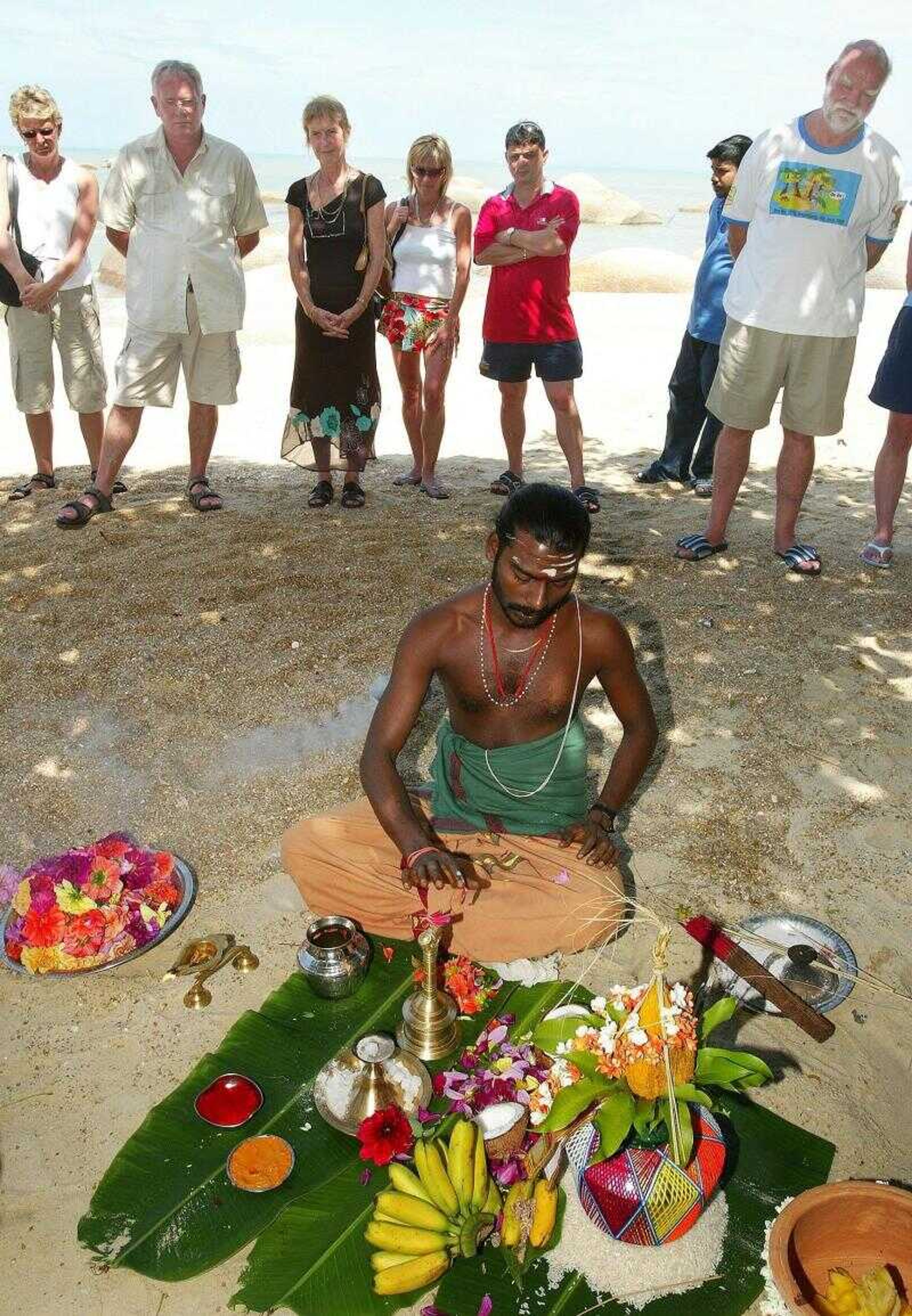Brief scare underlines threat on tsunami anniversary
BALI, Indonesia -- Sirens blared and thousands of people fled the coast Tuesday as Indonesia held its largest-ever tsunami drill. Others across Asia prayed at mass graves, chimed temple bells and lit candles two years after devastating waves claimed 230,000 lives...
BALI, Indonesia -- Sirens blared and thousands of people fled the coast Tuesday as Indonesia held its largest-ever tsunami drill. Others across Asia prayed at mass graves, chimed temple bells and lit candles two years after devastating waves claimed 230,000 lives.
There was a jarring reminder of the continued threat in the seismically charged region when a powerful earthquake struck off southwestern Taiwan, prompting a brief alert that a damaging tsunami might be headed toward the Philippines. No big waves materialized.
Sharon Howard, whose fiance and two children were among those killed in the Dec. 26, 2004, tsunami, one of the worst natural disasters in living memory, was one of dozens of survivors to return to white sand beaches to honor lost love ones.
"I miss them. They were my life," the British tourist said, tears pouring down her cheeks after attending a memorial ceremony on Khao Lak beach in Thailand. "I wish I could turn back time and they could all come back."
The most powerful earthquake in 40 years ruptured the sea floor off Indonesia's westernmost island, Sumatra, displacing billions of tons of water and sending towering walls of water roaring across the Indian Ocean at jetliner speeds into fishing villages, luxury resorts and bustling coastal towns.
Some 167,000 of the deaths were on Sumatra's northern tip, with Sri Lanka, India and Thailand accounting for most of the rest.
Some mourners observed a moment of silence at the exact time the waves crashed ashore, while others lit incense on the beach, offered prayers and threw flowers into the sea. Thai authorities also opened a cemetery for hundreds of unidentified tsunami victims.
But along with the commemorations another push was under way, with governments, volunteers and residents taking steps to protect against future tsunamis.
Those efforts gained urgency when Tuesday's earthquake brought a warning that yard-high waves could hit the east coast of the Philippines, but there were no known evacuations in the region and no damage was reported.
In Sri Lanka, the first of 100 tsunami warning towers was erected on a beach. Volunteers in Malaysia replanted mangroves, which some say act as a natural barrier against killer waves.
Indonesia said its tsunami drill on Bali -- a resort island unaffected by the 2004 disaster -- was aimed at raising the public's awareness of safety measures and testing technology deployed over the last two years.
Warnings were sent from the capital, Jakarta, to radios along the beach. Sirens wailed and crowds, many of them school children, briskly walked inland, accompanied by Indonesia's minister of research and technology and a handful of foreign tourists.
"The biggest challenge is working with the people to make them aware," said German geologist Harald Spahn, who is helping Indonesia set up its alert network. "It is a really complex job that many people underestimate."
In Thailand, ceremonies were held along the Andaman coast with Buddhist prayers to remember more than 8,200 dead, many of them tourists. Balloons were launched and candles lit along beaches that are now again filled with sun-seeking foreigners.
In Sri Lanka, temple bells chimed to mark the exact time the first wave hit, and all cars and trucks came to a standstill for two minutes to remember the 35,000 killed.
Ceremonies were small and somber in southern India, with 18,000 dead or missing. A dozen fishermen watched gulls circle overhead at one hard-hit hamlet, staring out to sea and telling stories about villagers who died.
Hundreds attended memorial ceremonies in Sweden to commemorate 542 Swedes confirmed dead and 15 listed as missing -- the worst loss of the country's citizens to a natural disaster in modern times.
Erika Ogren mourned the loss of two sons to the waves, one age 2 and the other just 4 months. "It still hurts awfully much," she told Swedish news agency TT.
The 2004 tsunami generated an unprecedented outpouring of generosity, with donor pledges reaching some $13.6 billion. But many of the homeless complain they are stuck with poorly built structures that leak, are termite-infested or located in flood zones.
Corruption has also marred the process, with several humanitarian groups forced to delay projects or rebuild homes after contractors and suppliers ran off with the funds.
Thailand, which opened a cemetery for unidentified victims Tuesday, faced fresh questions about possible graft. Seven Western nations sent a letter to Thai police saying up to 60 percent of the $1.6 million set aside to help identify the dead in that nation appeared to have been misused.
In the hard-hit Aceh region on Indonesia's Sumatra island, Zaldi Setiawan honored the memory of his two children, who were ripped from his hands by the force of the waves.
"I cannot forget the events of two years ago -- it feels like they happened just yesterday," he said, joining dozens of Acehnese praying at graves that hold tens of thousands of corpses, dumped without ceremony by mechanical diggers in the days after the disaster.
"I can still imagine their faces," Setiawan said.
Connect with the Southeast Missourian Newsroom:
For corrections to this story or other insights for the editor, click here. To submit a letter to the editor, click here. To learn about the Southeast Missourian’s AI Policy, click here.








